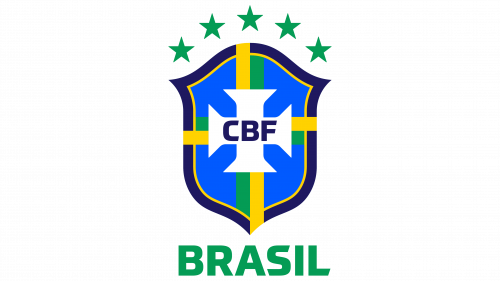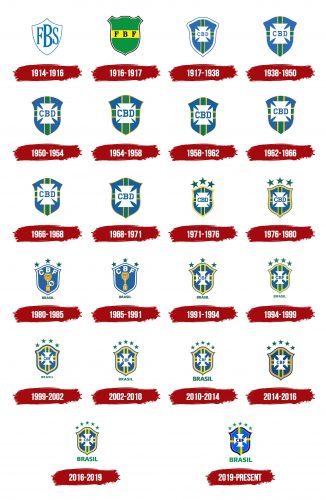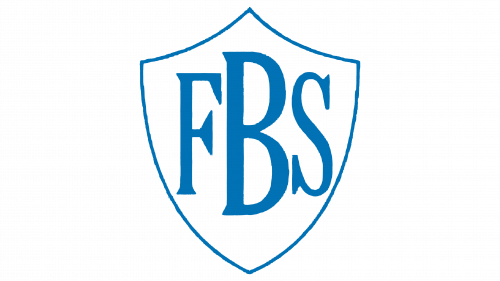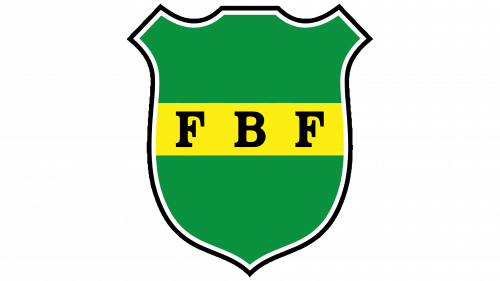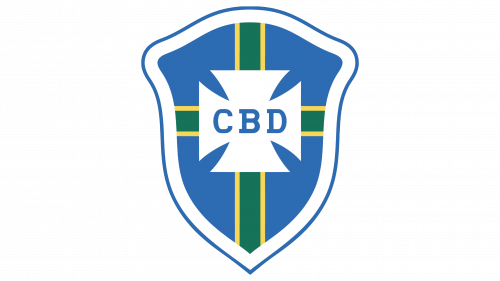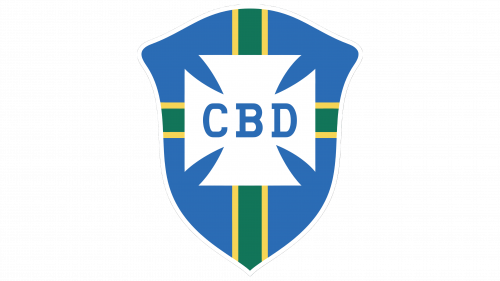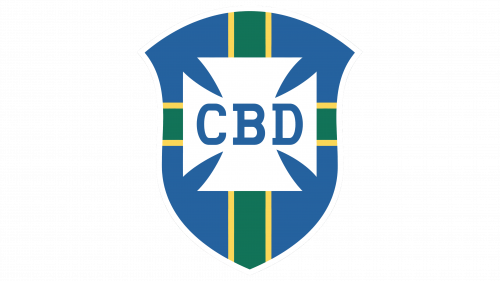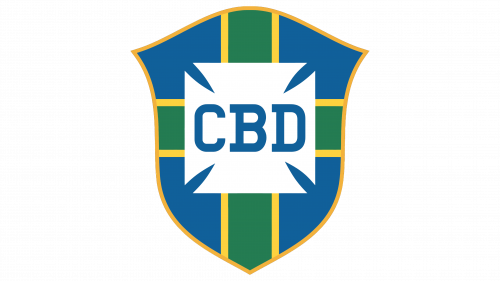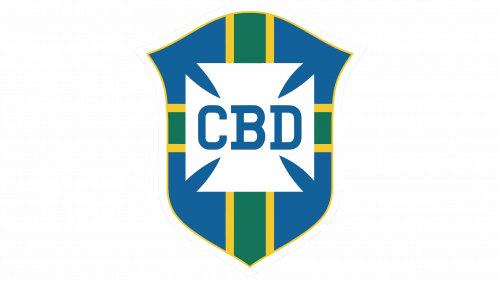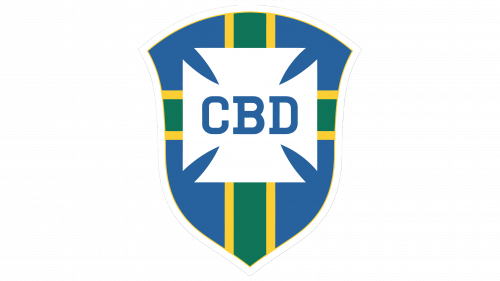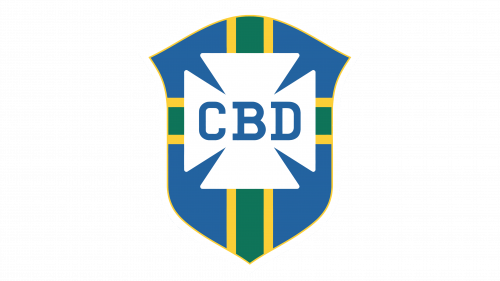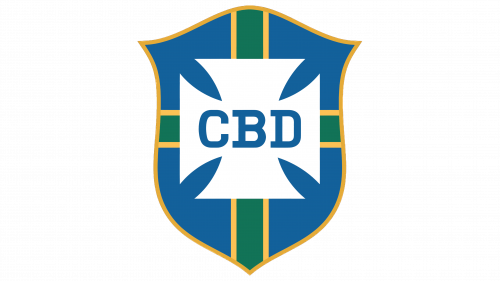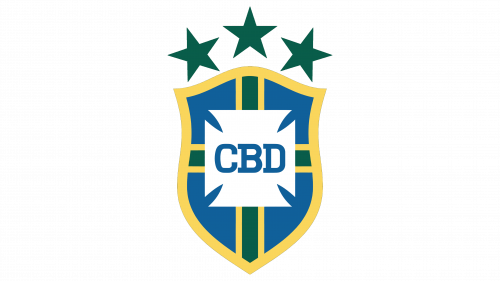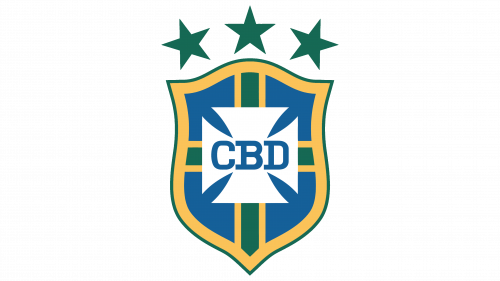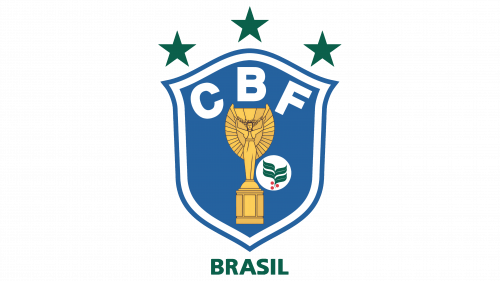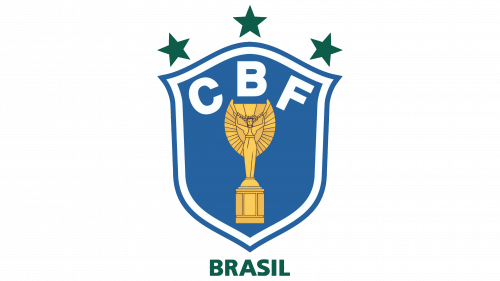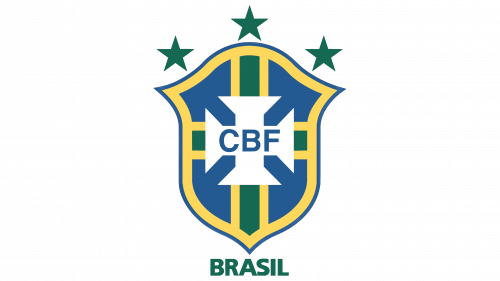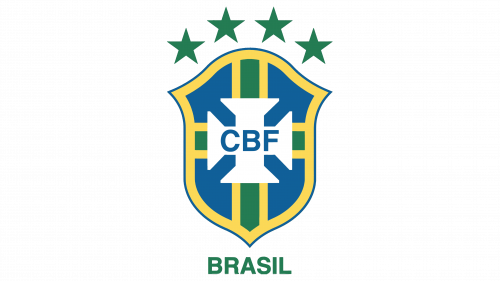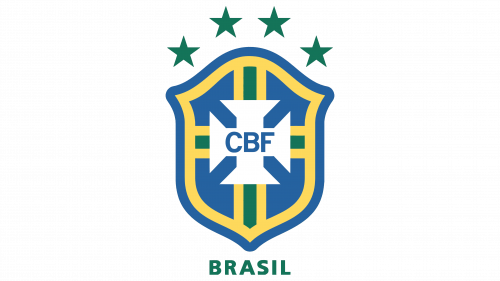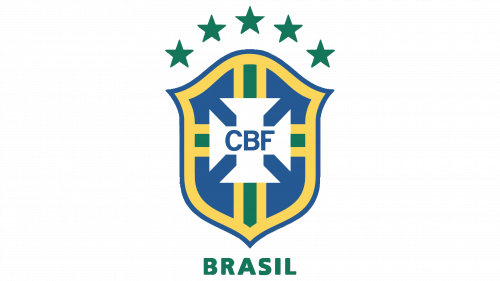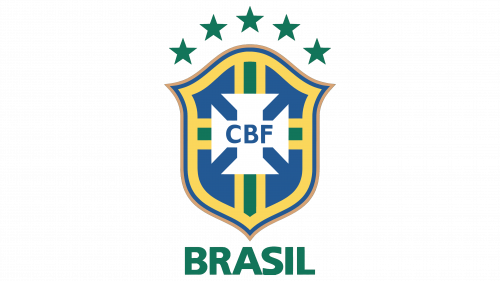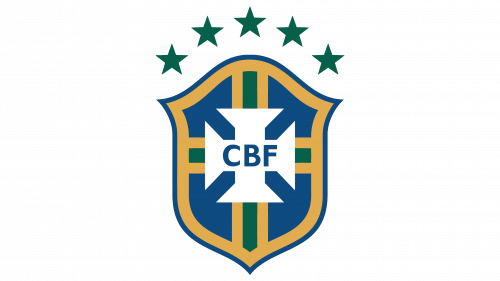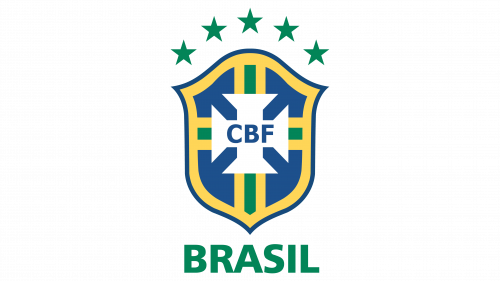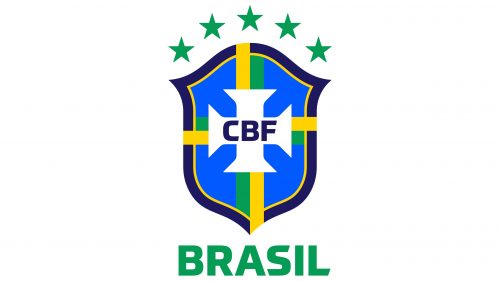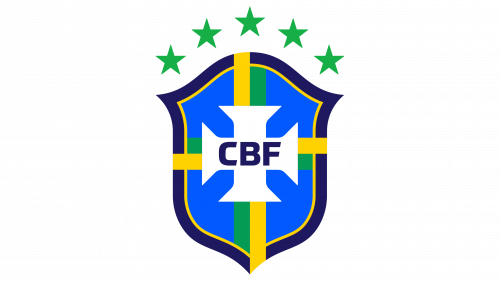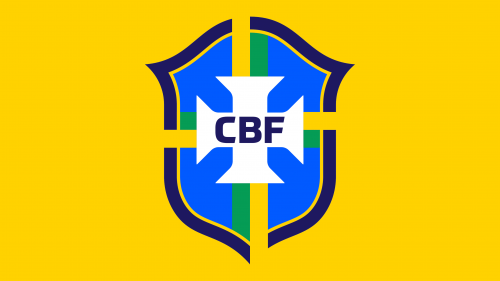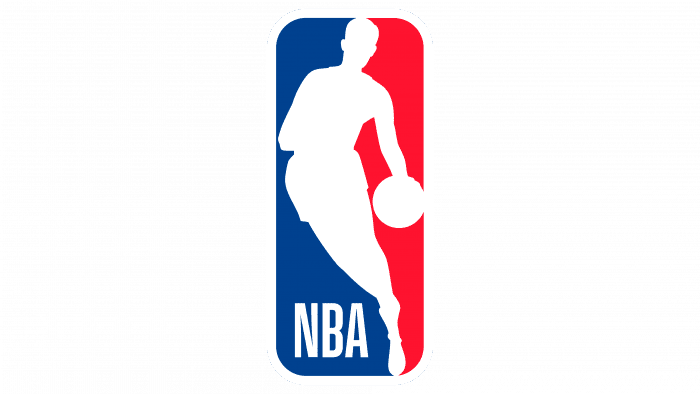Like the Brazilian Football Confederation emblem, the Brazil logo symbolizes loyalty to long-standing traditions and embodies the team’s cultural heritage. Its elements reflect the dynamism and energy of the game, and the colors convey pride for the home country.
Brazil: Brand overview
The Seleção Brasileira de Futebol, also known as Brazil, debuted in 1915. Shortly before that, in 1914, the organization Federação Brasileira de Sports was created, which has been called the Confederação Brasileira de Futebol since 1979. It took over the team’s management and control over its visual identity. Under its management, the athletes won several Olympic medals, received many FIFA cups, and became world champions five times.
Since their first match in 1914, the Brazilian national football team, or the Seleção, has been on a mission to reach the pinnacle of football. Starting with a tough 3-0 defeat to Argentina, they didn’t let this slow them down. Instead, they rose quickly, hinting at the start of their legendary status in the football world.
Pelé, just 17 years old at the 1958 World Cup, led Brazil to a historic win, introducing “jogo bonito” – the beautiful game – to the world. This wasn’t just a win but the start of Brazil’s reign over world football. The 1962 World Cup saw them defend their title, proving their excellence wasn’t a one-time event. The 1970 World Cup is often seen as their crowning achievement, with a team that played football so beautifully it captivated the entire world.
Despite a tough period, Brazil returned strong in 1994 with stars like Romário and Bebeto, and again in 2002, led by Ronaldo, Ronaldinho, and Rivaldo, securing their fifth World Cup win. These victories, nine Copa America titles, and four Confederations Cups show Brazil’s dominance in the sport.
The best in the game have worn the yellow and green jersey—Pelé, Garrincha, Zico, Socrates, Romário, Ronaldo, and Neymar. Each has left a mark, contributing to the Seleção’s rich history. Even the heartbreaking 7-1 loss to Germany in the 2014 World Cup couldn’t tarnish Brazil’s legacy. Instead, it reminded everyone of the highs and lows in the pursuit of greatness.
Brazilian football represents more than just a team; it celebrates skill, creativity, and an undying spirit. The Seleção is admired for its achievements and the joy and beauty it brings to football, inspiring fans worldwide.
Meaning and History
Most of the Confederação Brasileira de Futebol logos have a uniform design and differ only in the number of stars added as the Brazil team won the World Cup Champion. In the 1980s, the era of sports marketing began when emblems became a means of communication with fans. The visual sign of the CBF was slightly stylized but still retained traditional elements: a shield, a Maltese cross, and an inscription.
What is Brazil?
Brazil is the short name for Seleção Brasileira de Futebol. It is a team that represents Brazil in international FIFA and CONMEBOL competitions. It has won several World Cup Champions, FIFA Confederations Cups, and Copa Américas. Its governing body is the Brazilian Football Confederation.
1914 – 1916
The governing body of Brazilian soccer was established in 1914 under the name Federação Brasileira de Sports, so the logo of that time contains the blue letters “FBS.” The abbreviation is inside a pointed shield, trimming the upper part in two inverted arcs. All glyphs are uppercase and written in the same font with triangular serifs, but they differ in size: “B” is much taller than “F” and “S.” This makes the center of the emblem appear convex. The inner part of the shield is painted white, with a thin blue stripe along the edge.
1916 – 1917
When the confederation changed its name to Federação Brasileira de Football, the center of its logo featured the black abbreviation “FBF.” The letters are in uppercase with serifs and are inside a yellow stripe running through the middle of a green shield with a fancy shape. The bottom of the base remains pointed, but the top now has two rectangular protrusions with smooth curves on the sides. The shield is outlined by two lines: white and black.
1917 – 1938
The emblem acquired a more streamlined shape with rounded corners – only the narrowing bottom of the shield remained pointed. At the top, a rounded elevation appeared, which has since been present in most logos of the Brazilian Football Confederation. In the center is a white Maltese cross consisting of four trapezoids. It contains the abbreviation “CBD,” formed from the new name of the sports association: Confederação Brasileira de Desportos. The rest of the logo’s space is painted blue and divided into four parts by green perpendicular stripes with yellow edging. The shield has a wide white frame outlined by a thin blue contour.
1938 – 1950
Designers enlarged the Maltese cross and stretched the letters vertically to make the blue inscription more noticeable. They removed the outer frame of the logo.
1950 – 1954
In this version, the side protrusions of the shield have sharp angles, and the “CBD” abbreviation became even larger. A barely noticeable silver stripe runs along the edge of the emblem.
1954 – 1958
The logo creators outlined bright orange and changed the Maltese cross, reducing the gaps between its protrusions. They also refined the font, aligning the side parts of “C” and “D” vertically.
1958 – 1962
The shield’s design changed slightly: the curves at the bottom became more pronounced. The line running along the outside of the emblem is now thin and yellow.
1962 – 1966
The top part was a regular arc without sharp height variations. The Maltese cross was moved slightly higher, and the inscription was reduced.
1966 – 1968
Designers again changed the top of the shield, making smooth indentations along the edges. They also rounded the eight-pointed cross’s corners and aligned its protruding parts.
1968 – 1971
The version from 1954-1958 returned, where the shield has a noticeable orange outline. The only difference is in the shape of the letters: they are now smaller, and the left side of “C,” which was previously aligned vertically, acquired a smooth curve.
1971 – 1976
The logo was vertically elongated and outlined with a wide yellow stripe and thin orange edging. Pronounced indentations appeared on the sides, making the shield more elegant. The gaps between the four parts of the Maltese cross became smaller, resembling a square with notches at the corners. Three five-pointed green stars are depicted at the top. They represent the Seleção Brasileira de Futebol’s victories in three World Cup Championships: in Sweden (1958), Chile (1962), and Mexico (1970).
1976 – 1980
Orange was used instead of yellow, and a dark green line was drawn along the shield’s edge. The indentations of the eight-pointed cross were again enlarged.
1980 – 1985
The shield is completely blue and placed in a white-blue frame of two stripes. Inside is the golden Jules Rimet Trophy image and a circle with the emblem of the brand Café do Brasil (sponsor of Seleção) – three coffee beans under green leaves. The logo also contains two inscriptions: the white abbreviation “CBF” (formed from the new name of the sports association Confederação Brasileira de Futbol) and the green word “Brasil.”
1985 – 1991
Fans were outraged that the shield featured the Café do Brasil mark, so FIFA President Joao Havelange forced CBF to remove the circle with the coffee beans.
1991 – 1994
The traditional design of the shield with yellow and green stripes returned. In the center, as usual, is a Maltese cross, but now it contains the inscription “CBF” and is shaped like two crossed spools of thread.
1994 – 1999
In 1994, a fourth star was added to the logo, representing Seleção’s victory in the World Cup Championship held in the USA. The corners of the central cross are cut off. Also, the lower word “Brasil” changed font: the letters became slightly thinner and wider.
1999 – 2002
Designers restored the corners of the Maltese cross but rounded the sharp edges of the heraldic shield and widened its blue outline. The font used in the 1991 emblem was brought back.
2002 – 2010
In 2002, the athletes of Seleção won the World Cup Championship in Japan/Korea, so the governing body of Brazilian football proudly added a fifth star to its logo. Meanwhile, the blue line drawn along the shield’s edge again acquired sharp angles.
2010 – 2014
The emblem gained an additional contour in a dark gold color. The green word “Brasil” was enlarged to balance the arc of stars visually.
2014 – 2016
Designers removed the outer contour of the shield, got rid of the lower inscription, and repainted the yellow elements in dark gold color.
2016 – 2019
In 2016, the 2010 logo was reintroduced, but without the dark gold outlining.
2019 – today
In April 2019, the Brazilian Football Confederation unveiled a new identity. The agency Dalton Maag reworked the emblem, preserving the main elements: shield, stars, white Maltese cross, and inscriptions. The font became more harmonious and soft, and the colors acquired bright and rich shades. The shield is still divided into four parts by perpendicular stripes, but now they are doubled: yellow and green. The yellow fragments stretch to the very edge, overlapping the outer contour of the logo.
Font and Colors
The country’s name and the abbreviation “CBF” are written in a bold sans-serif font created by the typographic studio Dalton Maag. The ends of some letters are cut at a sharp angle.
The logo’s colors correspond to the palette of the Brazilian national flag: white (#FFFFFF), dark blue (#193375), yellow (#FFDC02), and green (#19AE47). However, the designers added another shade of blue (#0C87D1) – lighter and brighter.
FAQ
Where were the World Cups held that Brazil won?
Brazil has won the FIFA World Cup five times:
- 1958 in Sweden
- 1962 in Chile
- 1970 in Mexico
- 1994 in the United States
- 2002 in South Korea and Japan (joint hosts)
These wins highlight Brazil’s strong presence in football worldwide, with victories on different continents.
How many World Cups has Brazil hosted?
Brazil has hosted the FIFA World Cup twice. The first time was in 1950, right after World War II, marking a significant moment as the world came together for one of the first big international events post-war. This tournament is remembered for the Maracanazo, the shocking defeat of Brazil by Uruguay in the final, which has become a historic event in football.
The second tournament was in 2014, 64 years after the first. This World Cup brought a lot of excitement and colorful celebrations throughout Brazil’s cities and stadiums, showcasing the country’s vibrant culture and modern facilities. Unfortunately, it also included Brazil’s unforgettable 7-1 loss to Germany in the semi-finals, a game that stunned fans all over the globe.
These two World Cups in Brazil are memorable for the joy and heartbreak they brought. They highlight Brazil’s central role in football history and its ability to unite people worldwide in the spirit of sport.
How many times has the Brazilian national football team won the Copa America?
The Brazilian national football team has a rich history in the Copa America, winning it nine times. Their first win in 1919 kicked off Brazil’s long-standing love affair with football, a passion that’s only grown over the years. They won again in 1922, asserting their dominance in South America early on.
It took until 1949 for Brazil to win their third Copa America, a victory that highlighted their rising status in international football. The win in 1989 marked a comeback, signaling Brazil’s return as a football powerhouse after a struggle.
The late 90s and early 2000s were golden years, with wins in 1997, 1999, 2004, and 2007 showcasing the flair and skill that Brazilian football is famous for. The latest victory in 2019, on home soil, was a proud moment for the country, blending experienced players with new talent.
These Copa America victories reflect Brazil’s deep football culture and its role in shaping the sport globally. Each triumph tells a story of talent, passion, and the unifying power of football, making Brazil’s journey in the Copa America a national pride and a legacy that inspires future generations.
